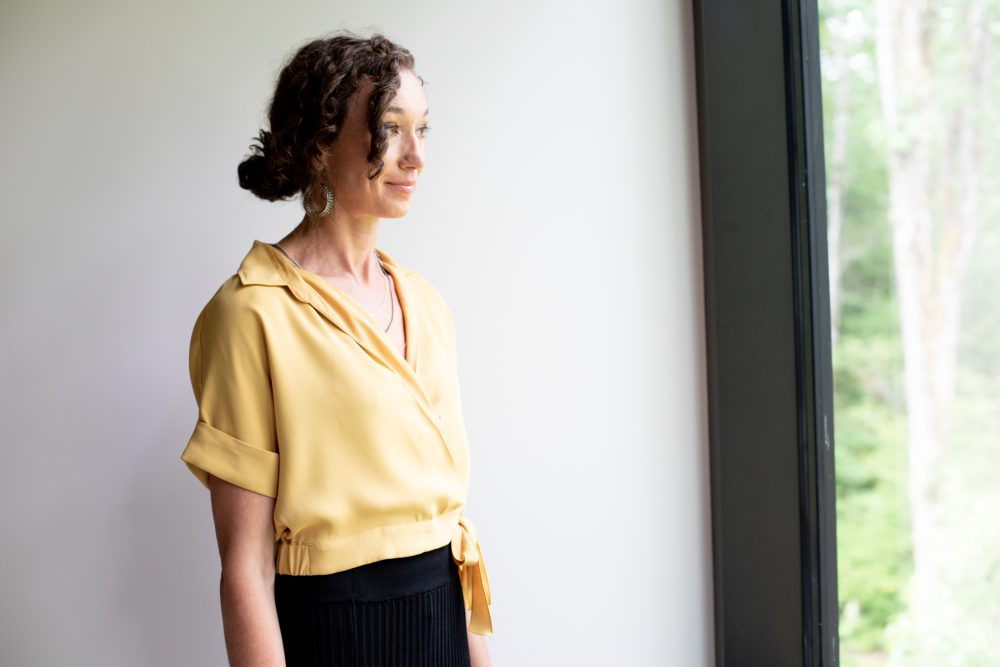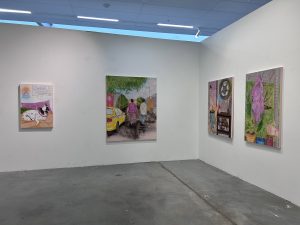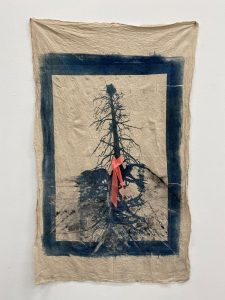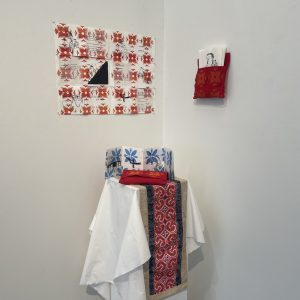Tumbleweed
Caroline Miller
See it On Campus: Level 1
Visitor InfoIn the Sculpture Room area, D1359
Tumbleweed
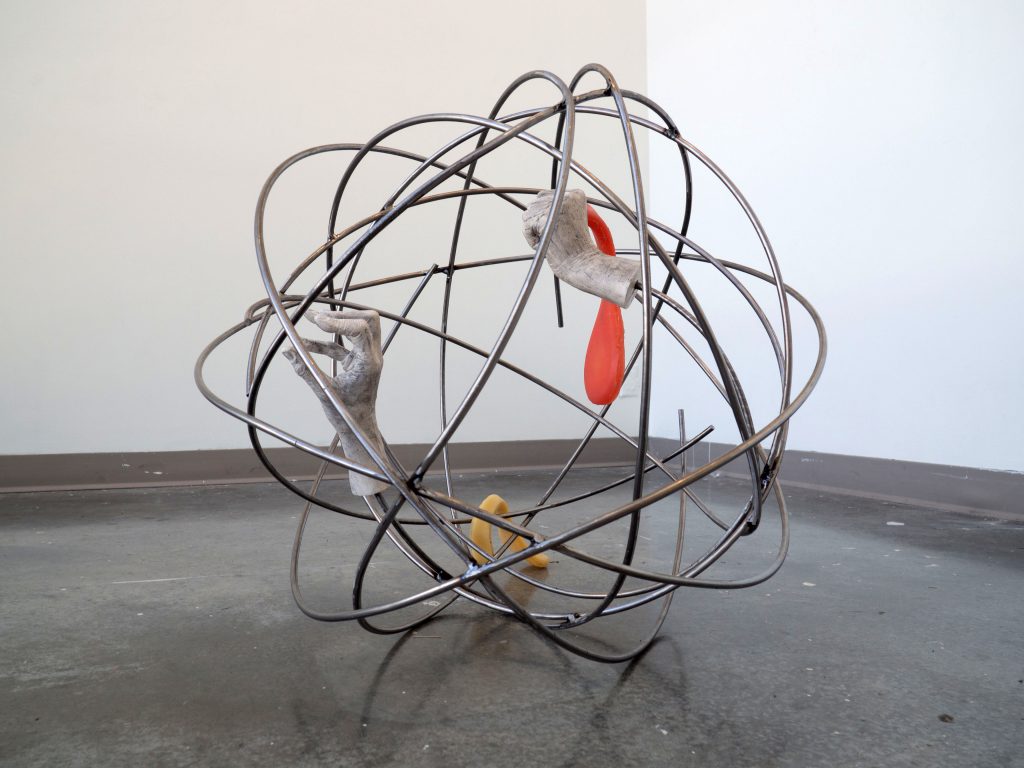
Tumbleweed, 2024. 3 ‘x 3′ x 3’, Cold rolled steel rod, silicon, hydrocal, charcoal.
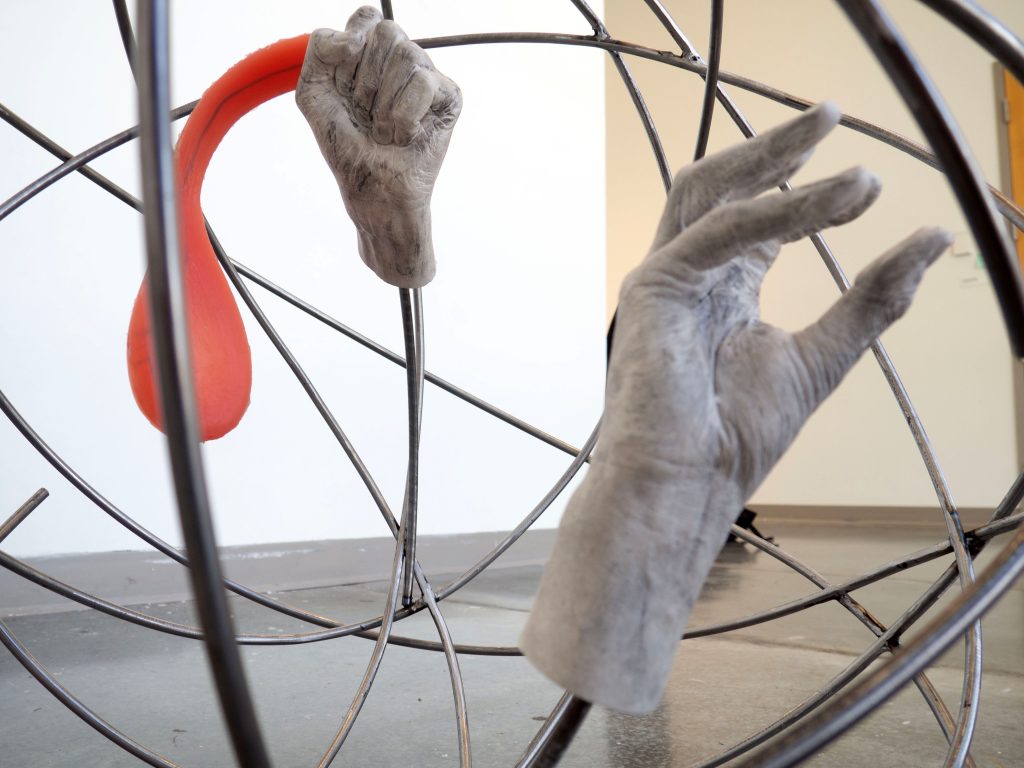
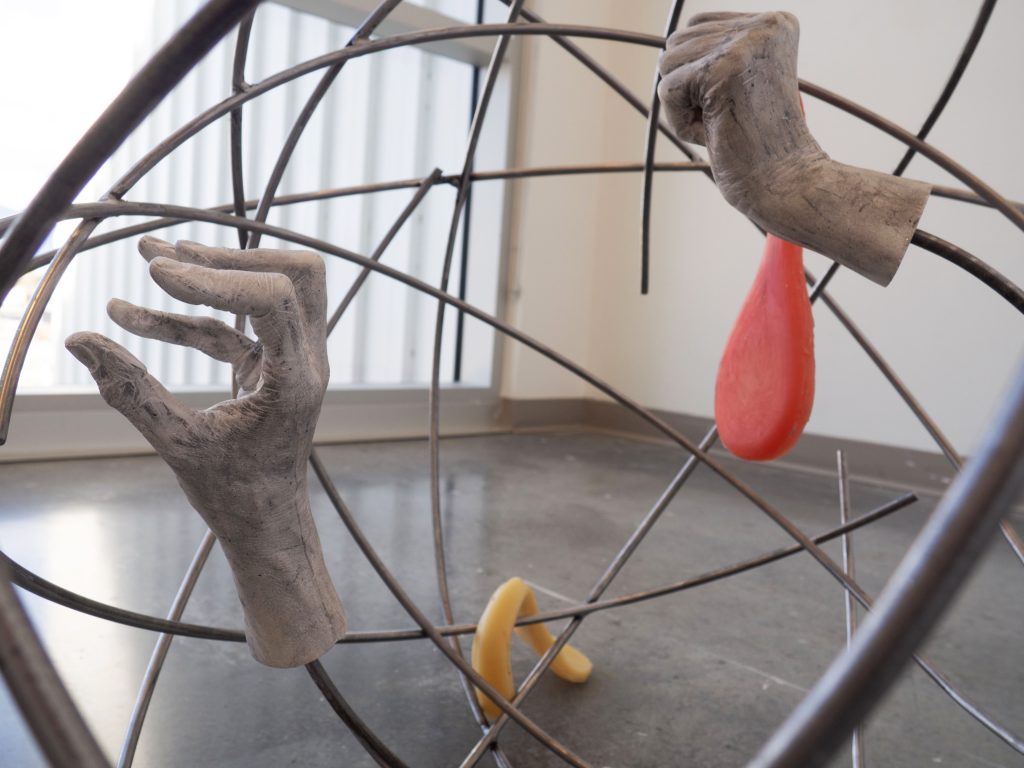
Tumbleweed has been shaped by my curiosity of looking at daily ritual behaviors we perform within a sedentary culture. The scheduled and routine actions we assign ourselves for health, safety and security, which also mark the passage of time. Habits like returning to the same job year after year, brushing our teeth twice a day, walking home the same route and using the same spoon to stir our food.
This sculpture is an inquiry through observation of sedentary vs nomadic lifestyles. By looking at objects and tools, we have designed to carry out daily tasks and questioning what these objects represent? Noticing how disoriented or anxious we can become when one of these objects is misused, misplaced, or lost.
I have used material processes to explore the misuse of domestic objects. Making plaster molds of household utensils, such as wooden spoons and turkey basters and then replicating them in coloured silicon, giving them a floppy almost comical feeling.
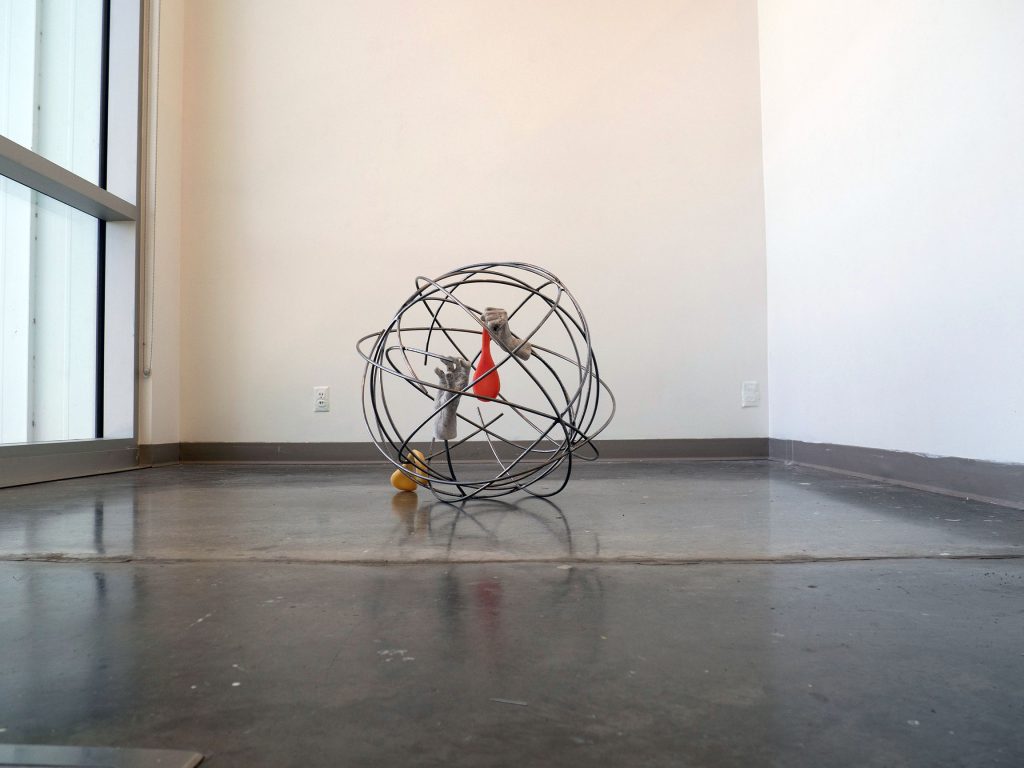
Alongside my examination of domestic objects. I have been looking at physical structures from the natural world that represent some sense of nomadic freedom, in contrast to sedentary objects that represent domesticity. I started to think about the shape and form of tumbleweeds and what they symbolize in American culture. When feeling tied down it is easy to romanticize the nomadic tumbleweed; always at the mercy of the winds.
Tumbleweeds evoke nostalgia for the American wild west. Hollywood has popularized this image of the invasive plant. This weed is European in origin, they are an invasive species, brought over by colonizing settlers in the 1800’s. They are a massive problem in some areas and readily spread their seeds across the lands.
OTHER WORKS
Picket Fence
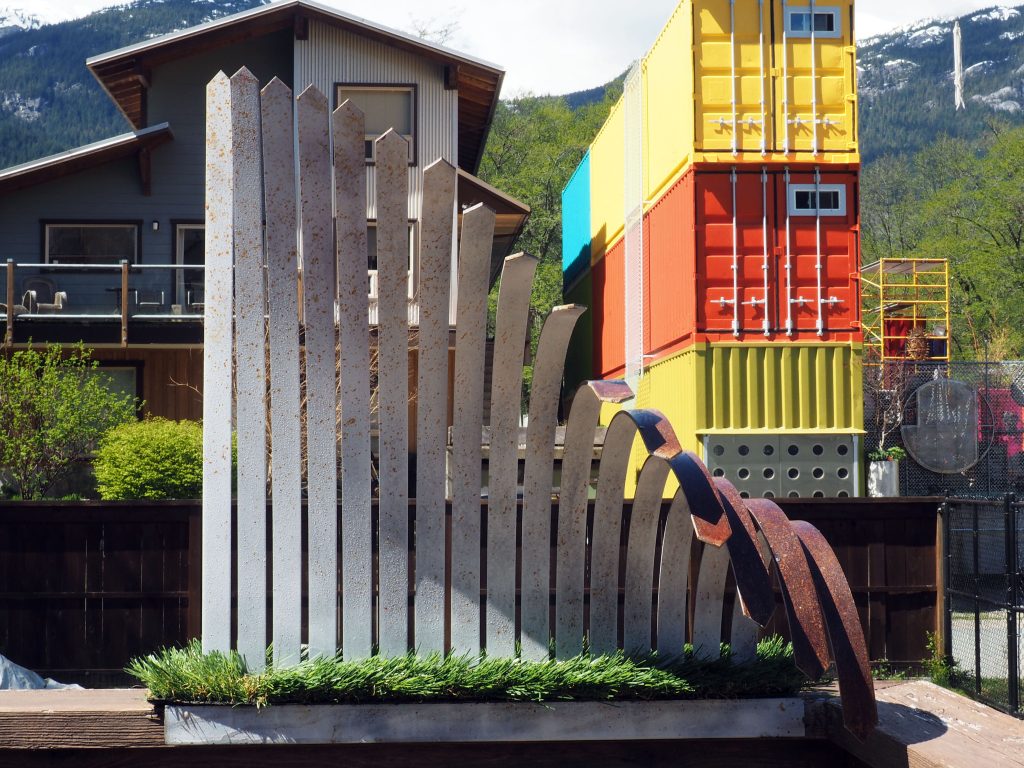
Picket Fence, 2022. 2.5′ x 3′ x 6″. Steel, white paint, astro turf.
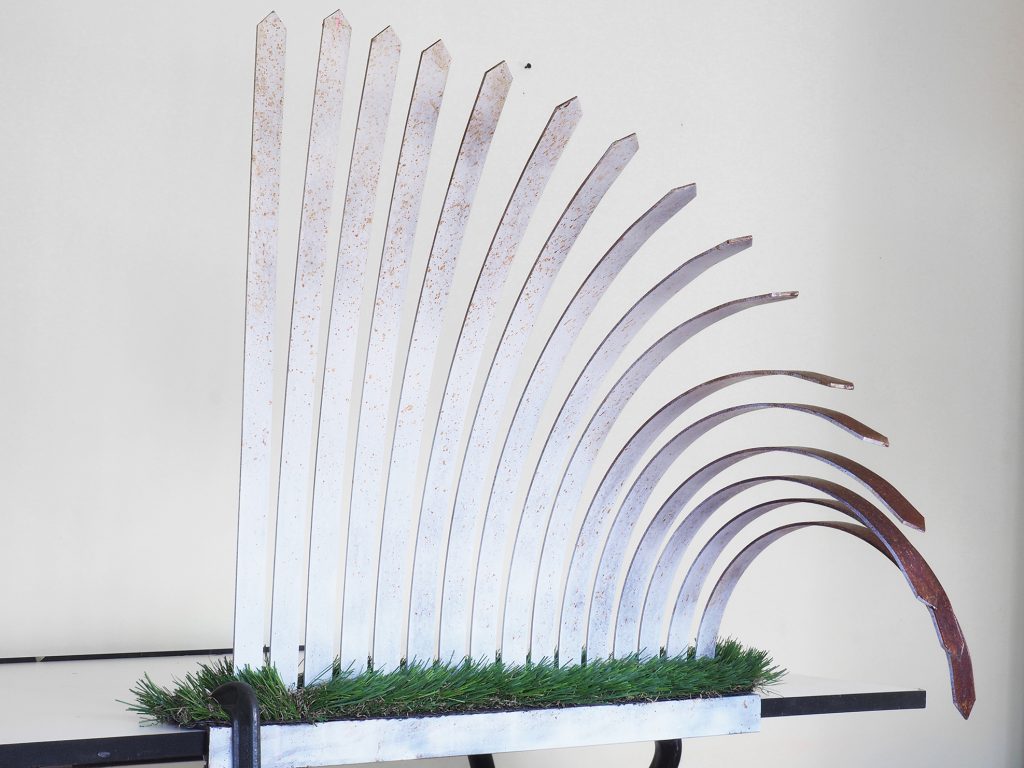
Picket fence is a site specific sculpture, it was made through the inquiry into the purpose of human made barriers like walls and fences. Walls attempt to resolve problems, however new problems emerge with the building of barriers; and often act as furthering the economic and political divide.
With globalization, there has been a surge in the number of physical walls being built to mark international borders. This directly affects spontaneous movement and has a severe impact on those wanting to move freely, or seeking refuge from their own politically unstable or war-torn country. Some current examples of border walls are; the walls separating Palestine and Israel, and the USA and Mexican border walls.
Early American settlers claimed large homesteads and pieces of land often marking borders with white picket fences. In doing so, stealing Indigenous lands and migratory sites.

The piece I have made is a miniature section of a picket fence, curved to resemble a breaking wave. Each picket has been individually curved in a graduated order from a straight picket to the most curved picket at the far end. The “breaking wave fence” represents the ideas and fears that support these physical barriers, which are constructed globally. The perceived security that these barriers provide is a mental illusion. With the building of these barriers many more problems and injustices arise. A wall around something seems as if it is guarding something precious. This fact in itself makes getting to the other side desirable, if humans really want to accomplish something, they will find a way to do so.
The front side of the sculpture is painted white and the backside has been purposefully rusted. The rust represents corrosion of ideas and culture, for the fence makers and a loss of freedoms and liberties for those locked out. The fake green grass laying along the bottom of the pickets represents the American suburban image of the picket fence surrounding a house, living the American dream.
